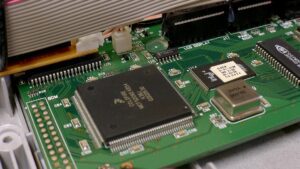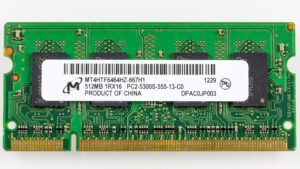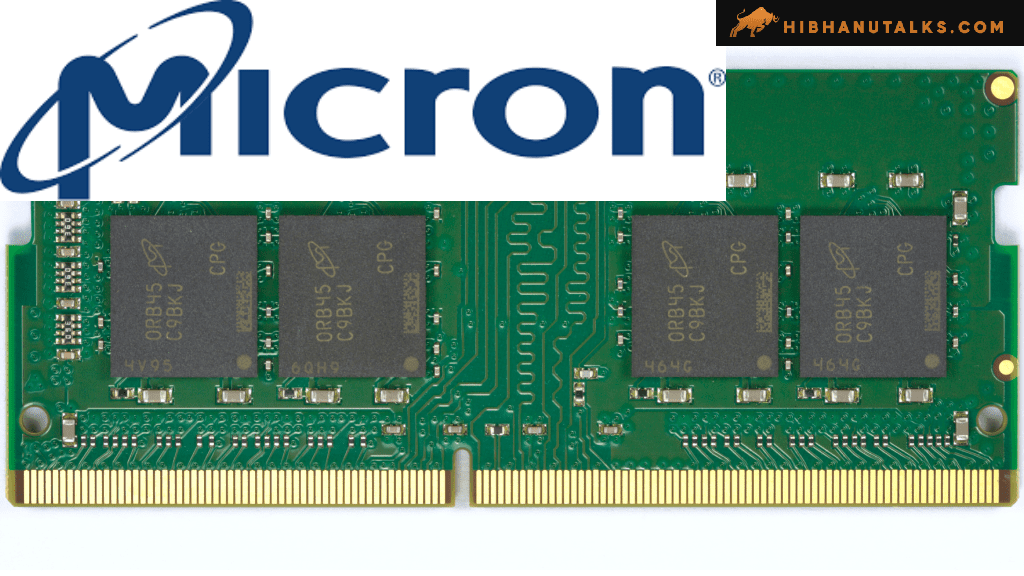
Micron’s Strong Memory Chip Demand Fuels Upbeat Q1 Revenue Forecast
Contents
Micron Revenue Forecast
Micron’s Strong Memory Chip Demand Fuels Upbeat Q1 Revenue Forecast


- Micron’s Forecasted Revenue Growth: Micron Technology has projected first-quarter revenue that surpasses Wall Street expectations. The company expects revenue of $8.70 billion, plus or minus $200 million, compared to the consensus estimate of $8.28 billion. This upbeat forecast has sent Micron’s shares up by 10% in after-hours trading.
- Demand for HBM Chips: Micron’s positive outlook is largely driven by strong demand for its High Bandwidth Memory (HBM) chips, which are crucial for powering AI technologies. These chips are highly sought after by the AI industry, particularly for use in AI processors designed by Nvidia. Micron, along with SK Hynix and Samsung, is one of the few global suppliers of these advanced memory chips, putting the company in a strong position to capitalize on the demand boom in the AI sector.
- AI Boom and Diversified Client Base: The rise of artificial intelligence (AI) has significantly boosted demand for memory chips, helping Micron mitigate the challenges of an inventory glut in the PC and smartphone markets. The AI boom has provided a new revenue stream, compensating for weaker demand in traditional markets like PCs and smartphones. Micron serves a broad client base, spanning the PC, data center, and smartphone industries, giving it exposure to various sectors that drive demand for memory chips.
- Gross Margin Forecast: Micron also forecast an adjusted gross margin of 39.5%, plus or minus 1%, for the first quarter, which is higher than analysts’ estimates of 37.7%. This improvement in margins reflects Micron’s ability to efficiently manage costs and tap into high-margin products like HBM chips.
- Fourth-Quarter Performance: For the fourth quarter, Micron reported revenue growth of 93%, reaching $7.75 billion. This impressive performance reflects the recovery of the semiconductor market and the growing demand for advanced memory products like those used in AI applications.
- Market Impact and Industry Influence: Micron’s financial results and forecasts are closely watched by investors, as they set the tone for the semiconductor industry. The company’s performance influences broader market sentiment because it supplies a wide range of industries, including PCs, smartphones, and data centers.
Advantages of Micron’s Forecast and Market Position
- Strong AI Demand: Micron benefits from robust demand for its HBM chips, driven by the booming AI industry, particularly in AI processors from major players like Nvidia.
- Limited Competition: With only two other key players (SK Hynix and Samsung) in the HBM chip market, Micron faces limited competition, allowing it to command strong pricing and market share.
- Revenue Growth: Micron’s projected revenue of $8.70 billion exceeds expectations, signaling continued strength in its business.
- Gross Margin Improvement: The company’s forecast for higher-than-expected gross margins indicates effective cost management and higher profitability from premium products like HBM chips.
- Resilience Against Industry Challenges: Despite a memory chip inventory glut in traditional markets, Micron has managed to shift its focus to high-growth areas like AI, showcasing resilience and adaptability.


Disadvantages and Challenges for Micron
- Inventory Glut in PC and Smartphone Markets: While Micron is benefiting from AI demand, the company still faces challenges from excess inventory in the PC and smartphone sectors, which could limit overall growth.
- Supply Chain Risks: As a major player in the global semiconductor market, Micron is exposed to potential disruptions in its supply chain, which could affect its ability to meet growing demand.
- Dependence on AI Boom: The heavy reliance on AI demand poses a risk, as any slowdown in AI development or demand could negatively impact Micron’s revenue growth.
- Limited Supplier Pool: While Micron benefits from being one of the few suppliers of HBM chips, this also puts pressure on the company to meet global demand, which could lead to potential production bottlenecks.
Conclusion:
Micron Technology’s strong first-quarter revenue forecast reflects the growing demand for advanced memory chips, particularly in the AI sector. While the company faces some challenges, such as an inventory glut in traditional markets, its ability to capitalize on AI-related demand positions it for continued growth. With limited competition in the HBM chip market and an improving gross margin outlook, Micron is well-positioned to benefit from the AI boom.


FAQs
- What is driving Micron’s revenue growth forecast?
Micron’s first-quarter revenue growth is driven by strong demand for its High Bandwidth Memory (HBM) chips, which are critical for AI applications. - Why is Micron important in the AI industry?
Micron is one of the three major suppliers of HBM chips, which are essential for AI processors, especially for companies like Nvidia that power generative AI technologies. - How has Micron performed in the fourth quarter?
Micron reported a 93% increase in revenue for the fourth quarter, reaching $7.75 billion, reflecting strong growth in memory chip demand, especially for AI and data center applications. - What are Micron’s gross margin expectations?
Micron has forecast an adjusted gross margin of 39.5%, which exceeds analysts’ expectations and indicates improved profitability driven by high-margin products like HBM chips. - What risks does Micron face?
Micron faces risks from excess inventory in the PC and smartphone sectors, supply chain disruptions, and a heavy reliance on the AI industry for growth.
Micron Revenue Forecast
Vedanta Ltd Set to Announce Fourth Interim Dividend for FY25: What You Need to Know





















1 comment